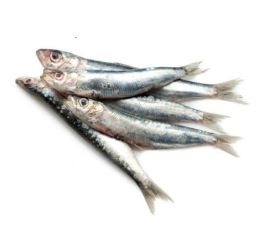THEY SAY THIS IS EVERYTHING YOU NEED TO KNOW ABOUT HERRING?🐟👀
SOURCE: https://www.thefishsociety.co.uk/blog/everything-you-need-to-know-about-herring
EVERYTHING YOU NEED TO KNOW ABOUT HERRING
When you think
of herring, your mind might send you to Scandinavia
and you might conjure up images of pickled fish with radishes and rye bread.
It’s true that the herring is a big hit in Scandinavian countries and features
in many national dishes, but that’s not all that this brilliant and versatile
fish has to offer.
Herring: The Basics
There are around 200
different species of herring although it’s just three that are usually caught
for food. They are Atlantic, Pacific and Araucanian herring. These specific
species can be found in the Atlantic and Pacific oceans.
The size of a herring
fish mainly depends on the species, but on average the larger ones can weigh up
to 1.5 lbs. You would probably be able to spot a herring if you spotted one.
They have a distinctive silver colouring that appears slightly blue on the top
of their body but paler underneath, which has led to them being nicknamed the
silver of the sea. The popularity of their meat has meant that the herring
fishing trade is always profitable.
A Healthy Fish
By now we all know
that including plenty of fish in our diets is extremely good for us, but
herring is viewed as a particularly healthy option. That’s largely because it
is a brilliant source of vitamin D. In fact, it has a much higher vitamin D
content than almost any other kind of food. This is especially good news for us
here on the British Isles as the usual grey and cloudy weather means that we
don’t often get as much of the vitamin from the sun than we should. Getting
enough vitamin D is incredibly important for us as it helps teeth and bones get
stronger and can also reduce the risk of certain health conditions.
And that’s not all.
Herring is also a good source of fatty acids, which are known to promote good
heart health. They also help the brain to function properly.
Buying Herring In The
UK
Even though we don’t
consume a huge amount of herring, unlike our neighbors in Scandinavia, Germany
and Holland, it is still plentiful around the UK. The majority of what is
available to buy will be the Atlantic species, but you might be able to to find
some other varieties from a specialist fishmonger. One notable point to make is
that each variety of herring comes into season at different points throughout
the year. Even though you might be able to find an abundance of Atlantic
herring next time you visit a fishmonger, just a few months later this might
change and they might have a different species on offer. At least that keeps
eating herring exciting!
Maatjes herrings with diced white onion
Herring is a very oily
fish but that shouldn’t be something that puts you off it - in fact, it’s one
of its many advantages! That’s because it makes it the perfect fish to pickle,
smoke or salt. Of course, you will still find it delicious if you decide to eat
it fresh! But for a Scandinavian-style supper, why not try pickled herring with
some crusty bread? If you do decide to pickle it, it can be stored for a good
few months meaning that you will still be able to enjoy it even at the few
times it is not in season.
If you want to cook
yours from fresh, then you should do very shortly after buying it. Fresh
herring has a short lifespan so needs to be cooked as soon as possible. If you
do cook from fresh, then you can grill or fry your herring.
Do you want to enjoy
your herring the Scandinavian way? If so, then you might like the idea of
buying a jar of rollmops. These are also easy to make at home - you just need
to roll up the herring fillets and secure by piercing a cocktail stick through
them. You then need to boil the rollmops in a mixture of water and vinegar. Add
a bay leaf and sliced onion for extra flavour. Once cooked, put the rollmops
into a jar and add the water and vinegar mixture. Once properly sealed, you can
then store the herring this way for about a week before they are ready to eat.
These can be eaten cold, straight out of the jar.
If you want to try
smoked herring, there are a few different types of sample. You might have heard
of the likes of kippers before, but have you already come across bucklings and
bloaters? These are all types of smoked herring and are often served cold.
Kippers make a remarkably good breakfast!
Herring roe is another
firm favourite in Scandinavian countries and could be something to try if you
are feeling particularly adventurous with your food!
As you can see,
herring really is a very diverse type of fish. We’re sure fish lovers will
really enjoy digging into its many varieties, whether pickled, smoked or fresh!
Not only that, though, thanks to its numerous varieties that aren’t at threat
from over fishing, this could be the fish of the future!




























